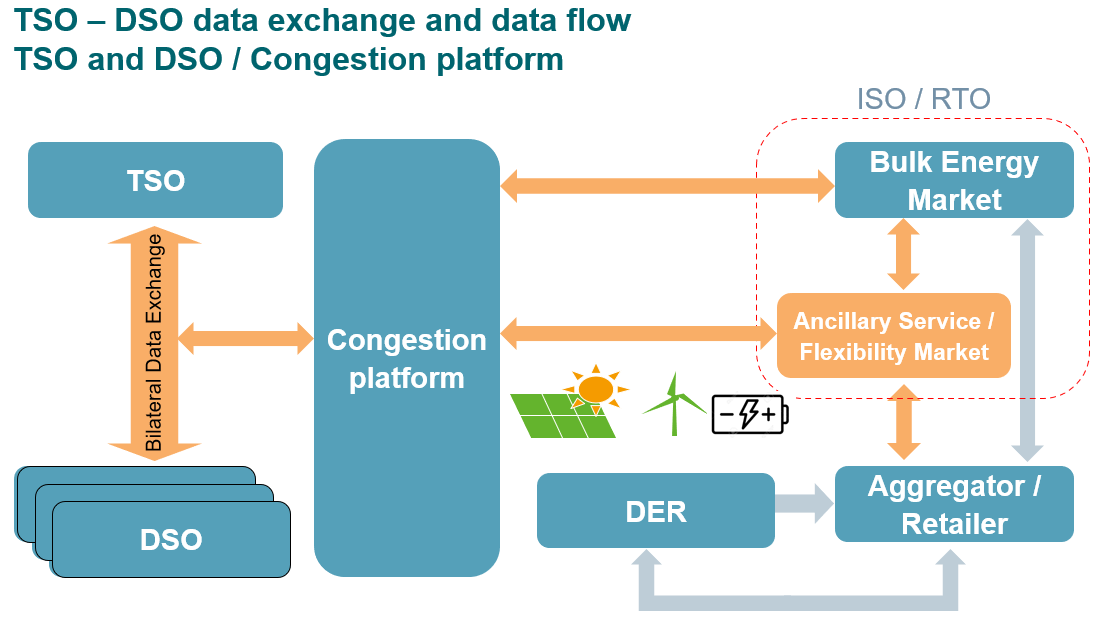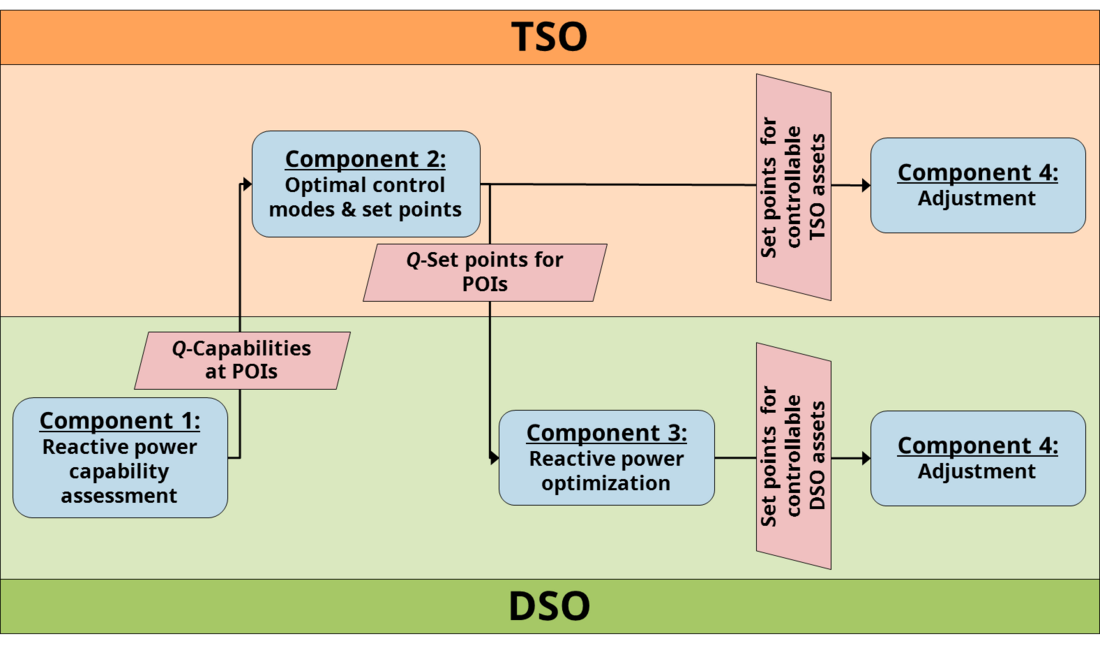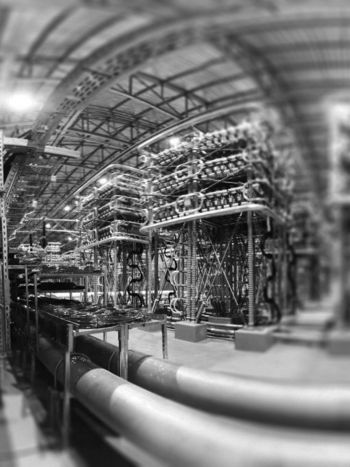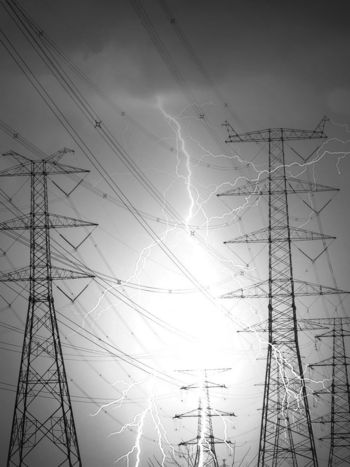TSO-DSO Co-Operation Control Centre Tools Requirements
The paradigm shift in the configuration of the power system with a high penetration of distributed renewable generation connected at the distribution system operator (DSO) level creates a new dimension in TSO-DSO co-ordination practices and procedures. Solar and wind energy production fluctuates due to its direct dependency on weather conditions. Furthermore, the steady increase of renewable energy (RE) together with the shift away from fossil fuels has led to the withdrawal of conventional synchronous power plants from operation. Hence, the onus is now on RE to provide the system services no longer provided by conventional plants. This creates a need for a new level of interaction and co-ordination between transmission system operators (TSOs), DSOs and dispersed energy resources and aggregators (DER/aggregators).
Convenor
(IE)
M. POWER
Secretary
(US)
J. T REILLY
M. OSTERMANN (DE), B. BIKKER (NL), M. ZUGCK (DE), M. ALCHOURROUN (FR), H. MORAIS (PT), J. HARRISON (US), M. STAEDTLER (DE), N. SINGH (CH), E. LANNOYE (IE), G. JUBERIAS (ES), J. POLLOCK (GB), C. NORLANDER (SE), T. HEARNE (IE), N. SUTTON (GB), E. GARRIGAN (IE), C. ROGGATZ (DE), S. (NDR) NUTHALAPATI (US), N. ZUZA (ZA), W. WELLßOW (DE), M. RIGANO (AU), A. KUBIS (DE)
Content
Since in most countries the TSO is solely responsible for global demand-generation balance through the procurement of balancing services and activation of balancing energy bids, frequency control and balancing requires co-operation between all parties involved i.e., TSOs, DSOs and DER/Aggregators. This is because large numbers of generators together with storage systems and demand side management (DSM) units are connected to the distribution system. Reactive power management and voltage control also requires a coordinated approach throughout the whole system to avoid voltage violations, and potentially, voltage collapse scenarios.
The role of this CIGRE WG is to specify a set of control centre tools and related IT platforms for both the TSO and DSO to manage and operate this newly evolved power system. The critical aspect that must be addressed is that the tools must enable a very high level of co-operation between the TSO and DSO so that they can efficiently address system issues at the different levels. Ideally, the same tools would be used in both control centres. At the very least, the tools should be interoperable. Interoperability between the tools should consider different time-horizons (at least real-time and short-term operational planning) and different services.
The electricity network, when first built, was designed to efficiently facilitate the flow of electrical energy towards the customer from large generators connected on the high voltage transmission system, through the lower voltage distribution system to the end customer. However, in recent times there have been several significant changes, in large part driven by climate change policy and market driven developments which have altered the traditional electricity network model. These include but are not limited to:
- Connection of a vast number of DERs
- Electrification of heat and transport
- More consumers producing their own electricity
- New technology that gives consumers more control over how they use electricity
- Advances in energy storage technology and its cost
- New market rules and grid codes worldwide
Co-ordination among the TSO, DSO and third-party stakeholders is essential for the efficient and reliable generation and delivery of power to electricity to customers. Industry regulators and system operators are beginning to call for new products and services that distribution-based resources can provide to the grid. Many of these take advantage of advanced sensing and communications capabilities. With this, new industry models are being defined which include modified definitions of roles and approaches to co-ordination. These roles outline the responsibilities of various parties in managing the grid and associated markets. Co-ordination captures how operators across the distribution and transmission networks manage the “grid” while mitigating the risks and realizing the benefits of distributed generation from renewable energy resources. Thus, there is a need for a clear definition of roles, mutually agreed operational protocols and procedures, operational tools, and information exchange in a new environment.
Whatever TSO-DSO operational structure emerges will depend on jurisdictions, stakeholders, and the regulatory environment. Reliability and security of the grid are paramount. Co-operation, information exchange and the necessary control centre tools will be adopted accordingly. Managing the grid as the TSO and DSO grids converge is a major theme of this document.
This Technical Brochure is the result of work undertaken by CIGRE Working Group C2.40 and is organized into five chapters. After introducing the background to the issues addressed by the working group in the first chapter, the second chapter discusses the operational challenges which are being faced by the TSO and DSO today and what they are expected to be in the future. The chapter identifies several operational functions where grid operators require dedicated tools to manage DER and co-ordination among transmission system operators and the host distribution system operators. These areas include System Balancing, Congestion and Constraint Management, Voltage Control, Controllability and Observability, Forecasting and Restoration.
The third chapter is dedicated to data and information exchange between TSO and DSO, which are essential for efficient co-operation. The data and information are described in this chapter as well as methodologies for exchanging them. The proposed main technologies for data exchange are focussed on CIM/XML and ICCP/TASE.2. Co-ordination of transmission and distribution systems, and especially the provision of ancillary services from distribution resources, requires close co-operation and exchange of information between all parties involved, i.e. TSOs, DSOs, DER/Aggregators and market operators. Figure 1, for example, illustrates a common TSO/DSO congestion platform where either the TSO or DSO can activate the flexibility services of DER connected to the distribution system. Several other functions are also major drivers for TSO-DSO co-ordination such as Volt-VAr control, market co-ordination, system restoration, outage planning, long-term planning, and real-time operation supervision, and operations planning.

Figure 1 – Common TSO/DSO Congestion platform
The fourth chapter presents six tools which will help the TSO and DSO coordinate their operations and meet the challenges which high penetration distributed generation poses to their operational relationships and interactions. These six tools address congestion management, constraint management, voltage control, DER management systems (DERMS), restoration and a Joint Tool for Power Flow, Voltage Control and Active and Reactive Power Management. The fifth chapter gives a perspective on where we are today and looks ahead to challenges on the horizon.
The first tool outlined is a Congestion Platform where TSO activations of flexibility can cause local congestion for DSOs. The DSO receives proposed flexibility activations from the Flexibility Service Providers (FSP) and runs power flow analysis to determine if congestion is predicted, based on the proposed activations. Where the DSO congestion platform identifies that the proposed flexibility activations will create congestion, then it must apply an agreed set of rules to ensure that a reduced set of activations is presented back to the FSP. An alternative automated approach is also proposed to manage congestion issues arising due to increased volumes of distributed renewable generation. This tool identifies network congestion issues in high wind scenarios and determines wind generator effectiveness in managing these issues.
The second tool is a Clearing Platform for Network Constraints on the Transmission/Distribution Networks. It receives global and regional flexibility needs from the TSO and local flexibility needs from the DSO. Within the clearing platform any network constraints specified by the Transmission System Operator (TSO) and Distribution System Operator (DSO) are applied and a “net” set of flexibility requirements is relayed to the FSP, considering conflicts between competing TSO and DSO requirements and synergies between local, regional, and global requirements.
The third tool is a Voltage Support tool (Figure 2) which provides optimal co-ordination of reactive power exchanges between the TSO and DSO, using the capabilities of the distribution system to support the voltage on the transmission system. This is achieved via four executable steps which achieve optimal reactive power or voltage set points at the boundary points between the transmission and distribution networks, known as Points of Interconnection (PoI).

Figure 2 - Voltage support tool (POI – point of interconnection)
The fourth tool is DERMS (Distributed Energy Resource Management Systems) which is an application platform using technologies and operational concepts to aggregate, integrate and manage distributed energy resources (DER) and controllable loads in distribution and transmission systems to enable the provision of flexibility services. These emerging systems are expected to play a vital role supporting TSO and DSO interaction for the management of Inverter Based Resources (IBR) including storage system and controllable loads.
The fifth tool addressed is restoration. With distribution systems with a high degree of IBR penetration, the traditional methods of restoration may no longer be sufficient. System operators will have to embrace alternative methodologies. To this end, a restoration support tool (RST) for use by control room operators is proposed.
The sixth and final tool is a joint tool for power flow and voltage control and active and reactive power management at points of interconnection for the optimal co-ordination of the active and reactive power exchanges between the TSO and DSO. The focus of the tool is to explore the capabilities of the distribution grid to alleviate network congestion and to improve overall security support and voltage control on transmission systems.
Conclusion
The fifth chapter concludes the ongoing work and shows what future steps are being taken and where challenges remain to be met. Most of the technical issues related to tools for TSO-DSO co-ordination and operations are already identified, analyzed, and investigated in the industry. These explorations are the result of many research experiments and pilot projects which yielded promising solutions. However, these solutions were demonstrated on a small scale. Thus, the technical issues associated with a large-scale rollout of DER and related operational issues of TSO-DSO co-ordination remain for further research and innovations. Several issues are outstanding where solutions have not yet been found to the full satisfaction of TSOs and DSOs. These include large scale integration in the command-and-control structure, dynamic modeling, and the impact of under frequency load shedding, common training and standard operating procedures and market/commercial considerations. Table 1 summarises these conclusions.
Tools addressed in this brochure | Tools requiring further investigation |
|---|---|
Congestion Management | Frequency Control and System Balancing |
Constraint Management | Dynamic modeling |
Voltage Support | Impact of under frequency load shedding |
Distributed Energy Resource Management Systems | Common training and standard operating procedures |
Restoration | Market and commercial |
Combined power flow and voltage control | Large scale integration in the command-and-control structure |




